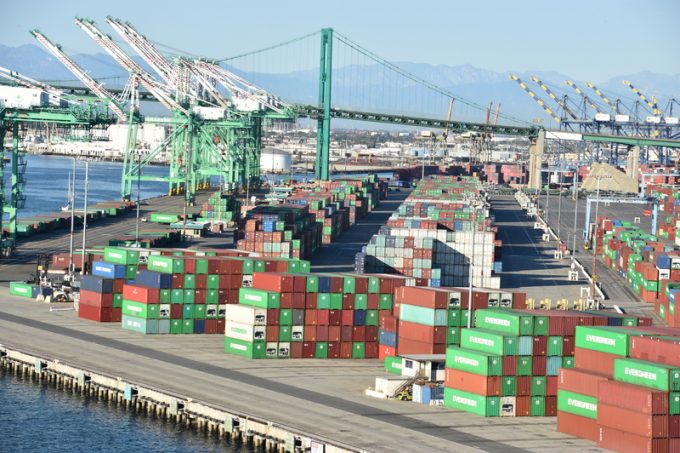Walmart, tariffs, and China: a cautionary tale
The Chinese ministry of commerce has held talks with Walmart, after the US retailer said ...

US west coast ports, and rail and road links to the interior, are currently struggling with a surge of imports from Asia, mostly from China.
Despite all the fiery rhetoric and tariffs, the flow of goods from China to the US has not slowed down.
“We have not seen a major slowdown in business with China, it’s pretty steady, if not growing,” said Bob Imbriani, vice-president international services of forwarder Team Worldwide.
If anything, US appetite for goods from China has increased: the ...
Macron calls for ‘suspension’ – CMA CGM's $20bn US investment in doubt
Trump tariffs see hundreds of cancelled container bookings a day from Asia
De minimis exemption on shipments from China to the US will end in May
Forwarders stay cool as US 'liberation day' tariffs threaten 'global trade war'
Mixed response in US to 'Liberation Day', while China leads wave of retaliation
Tariffs and de minimis set air freight rates on a volatile course
Overcapacity looms for ocean trades – with more blanked sailings inevitable
'To ship or not to ship', the question for US importers amid tariff uncertainty

Comment on this article
Cody
September 10, 2020 at 3:19 amSlow? It is not meant to slow… it is meant to increase trade. It is working.
JJ Stelman
July 22, 2024 at 12:24 pmI found this article online: https://www.zendeq.com/lanes/shippin-between-the-united-states-and-china/
Is there any way of getting updates if tariff duties change? For example, suppose there are higher import tariffs on lithium, can I get an update on that?
Alex Lennane
July 22, 2024 at 12:26 pmYou can check here: https://www.usitc.gov/tariff_affairs_announcements.htm. If I find a way of getting updates, I’ll let you know!
JJ Stelman
July 31, 2024 at 10:39 amThanks!